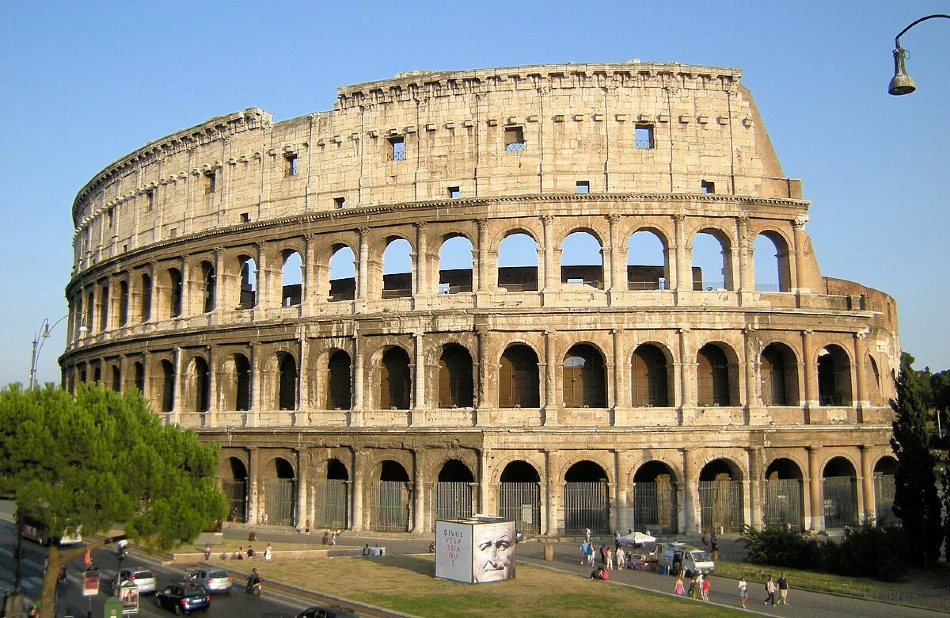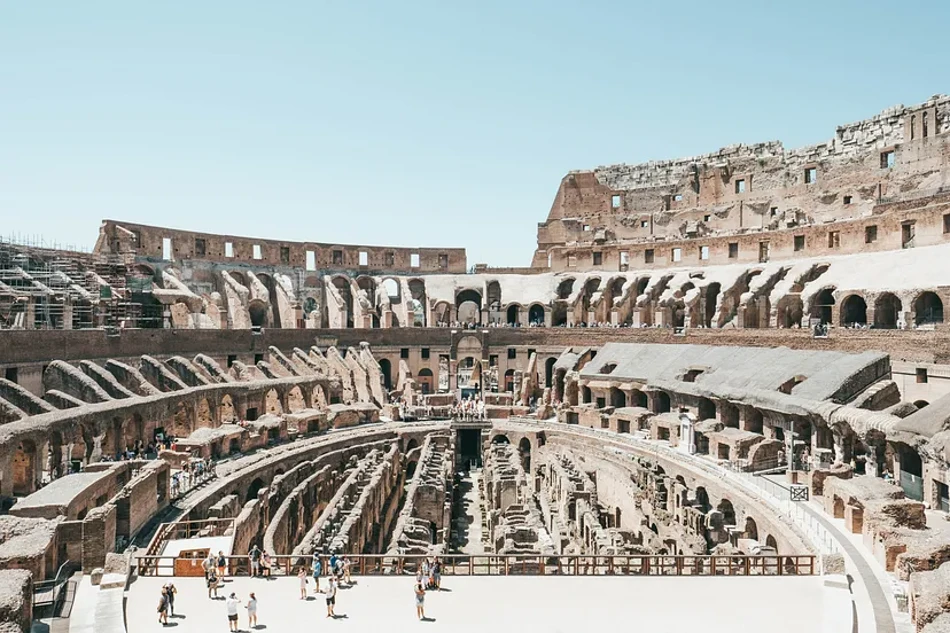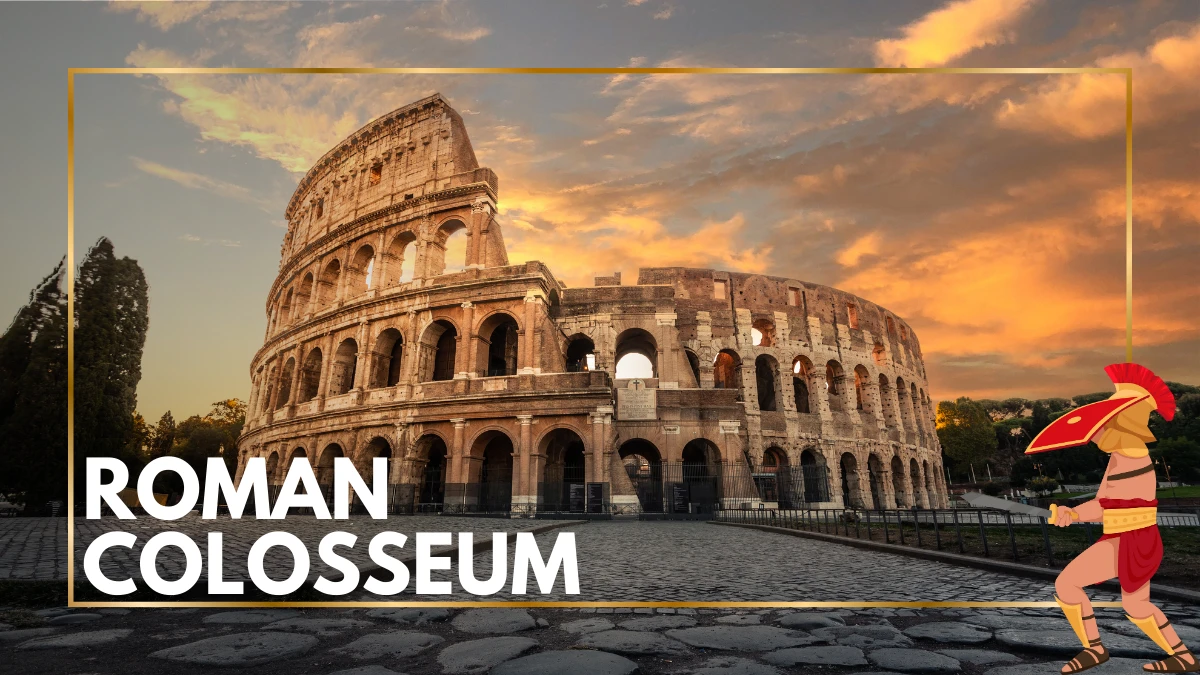Rome Attractions

Counted among the Seven Wonders of the World, the Colosseum Amphitheater is Rome’s most popular tourist attraction.
More than 4 million tourists are estimated to visit this Roman attraction every year.
Imagine the number of Colosseum tickets the Romans are selling!
It was originally called the Flavian Amphitheatre, named after the Emperors of the Flavian Dynasty.
Its construction started in 72 AD and lasted nine years, ending in 81 AD, leaving behind the magnificent structure.
The construction commenced under Emperor Vespasian and was completed by his son, Titus.
The half-broken elliptical structure that stands today results from various natural disasters.
Earthquakes of 847 AD and 1231 AD caused most of the damage to the Colosseum.
Check out some of the best Roman Colosseum facts –
1. Colosseum is also popular amongst botanists
It’s a popular Roman tourist destination and a fascinating site for botanists.
It is estimated that approximately 1643 types of flora and 337 different species are found in the Colosseum, which attracts the interest of botanists.
The attraction may have housed various species of flora thanks to the excellent soil pampered by the dead bodies of wild animals and gladiators.
2. Colosseum has inspired Hollywood movies
Impressed by its grandeur and history, Hollywood director Ridley Scott endured the chaos of red tape and bureaucracy to film the Russel Crowe superhit ‘Gladiator.’
Either the real Roman Colosseum wasn’t good enough for him, or he didn’t get the required permissions, for Scott spent $1 million to build a replica of the Amphitheatre in Malta.
The movie made a gross profit of $457.6 million worldwide. All that production cost was worth it!
3. The men behind the Colosseum aren’t known
The hand behind designing this great monument is not known.
During medieval times, the ancient Roman poet Virgil was said to be the mastermind behind the amphitheater.
But now there is proof that Virgil died long before the attraction was built.
So, we still don’t know the person who deserves the appreciation for this great and intelligently designed monument in Rome.
Visual Story: 15 must-know tips before visiting the Colosseum
4. Colosseum was built for multiple reasons

Though one purpose of the construction was to provide entertainment, it also served two other purposes.
It was built as a gift by Flavian dynasty emperors to Roman citizens, hoping to gain their trust and become popular.
The other purpose was to showcase Roman engineering and power to the world.
Recommended READING
5. Christian proclamation didn’t stop Gladiator fights
As nice as it is to believe that religion played a role in stopping the inhumane practice of Gladiator fights, it isn’t true.
Around 432 AD, the Romans could no longer afford the expenses of procuring animals and gladiators while maintaining an expensive and humongous theatre.
This inability to financially handle the entertainment facility ended the Gladiator Spectacles.
6. Part of the Colosseum resides in St. Peter’s Basilica
Maybe it was because of their eternal love for the place, and they wanted to preserve it.
Or it could be because they were nature lovers and understood the value of recycling.
Whatever it was, when the two major earthquakes partially destroyed the Amphitheater, some of the fallen pieces were used to construct the beautiful St. Peter’s Basilica.
7. Colosseum is so big it could seat 50K spectators
The Colosseum is an elliptical building that is 189 meters long, 156 meters wide, and 48 meters high, covering a base area of approximately 24,000 m2.
The amount of marble used for the construction of this amphitheater is estimated to be 100,000 cubic meters.
It has over 80 entrances, and over 50,000 spectators can watch the spectacle simultaneously.
8. It took 300 tons of iron to build the Colosseum
The Colosseum in Rome is made of travertine stone covering its outer wall.
The stone was set into the wall without the use of mortar.
It took 300 tons of iron clamps to make it stand upright, and they are still standing.
9. Colosseum wasn’t just an amphitheater
It was used for gladiator contests and public exhibitions, such as animal hunts, mock sea battles, reenactments of famous battles, executions, and dramas.
With time, it was no longer used as an entertainment theatre.
It was converted into a vintage complex that housed and conducted workshops, religious quarters, a quarry, a fortress, and sometimes a Christian shrine.
10. Bullock carts were used to bring in marbles
Historical evidence shows that around 200 bullock carts were used to transport the marbles to the construction site.
Must read: Check out the guy who built the World’s first LEGO Colosseum
11. Colosseum’s name has an interesting history
The Colosseum was built near a huge statue of Colossus.
The statue was part of Nero’s Park and inspired the current name.
12. The Colosseum has a hidden side
The Colosseum isn’t just above the ground. There is something that’s known as Colosseum’s Underground.
The area under the Colosseum was called the Hypogeum, a.k.a Underground.
It consisted of two leveled subterranean networks of tunnels and 32 animal pens.
The 80 vertical shafts provided instant access to the arena for animals and scenery.
The Underground tour can be just as interesting as the main theatre.
Check out: Best tours of the Colosseum Underground
13. The Roman emperors cared about their people
The builders prepared for every situation to provide complete comfort and the best experience.
To protect the audience from the raging sun and heat, they built a Velarium, an awning that could be pulled over the seating area to provide shade.
We can say that they had built the earliest form of the ‘Skydome’ in the Colosseum.
Moreover, the ancient Romans were offered free entry and food during the festivals.
14. Colosseum has a ‘Gate of death’

Over 500,000 people lost their lives throughout the life of the Colosseum, and more than a million animals were killed during the spectacles.
All these dead bodies were carried out from the west gate, and thus it gave rise to the name ‘Gate of Death.’
Entering the Arena floor of the Colosseum through the ‘Death Gate’ is a unique experience, so book the tour of Colosseum and Arena with access through Libitinarian gate and enter this great structure through this gate. This is one of the best guided tours of the Colosseum.
15. Romans knew how to catch the spectators’ attention
To make the gladiator and beast fight more interesting and adrenaline-filled battles, the attraction was fitted with 36 trap doors.
These trap doors were used to add special effects during the fights.
Explore more in a day
16. The Colosseum is the definition of bizarre
In 80 CE, the then emperor, Titus, held the inaugural games of the Colosseum, where around 9,000 wild animals were slaughtered.
Moving on, in 107 CE, Emperor Trajan held various contests for 123 days to celebrate his victories in Dacia.
These contests involved 11,000 animals and 10,000 gladiators.
17. The last gladiator fights were held in 435 CE
The financial stress led the Roman leaders to stop the gladiator and beast fights in 435 CE.
It took nearly another century to stop animal hunts in 523 CE.
18. The era of Colosseum killed off complete species
For the time the Colosseum bustled with life, it ended many others.
It is reported that the amount of slaughter cleared off various species of animals from across the globe.
The hippo disappeared from the Nile River, and the African elephants commonly used as war animals vanished from the face of the Earth.
These fights ‘have completely devastated the wildlife of North Africa and the Mediterranean region.’
19. Today, Colosseum is the symbol against capital punishment
At night, the Colosseum is lit with beautiful white lights.
If anywhere in the world, regardless of the crime, a person gets their death sentence overturned or if they are released, the color of the lights at the Colosseum is turned from white to gold.
This color change also occurs when any other country abolishes the death penalty.
Ironically, the monument that saw brutality and death for centuries now stands for something that’s the complete opposite.
So, as you know, Italy abolished the death penalty in 1948.
Visiting the attraction can be a very overwhelming experience, especially if you know its rich cultural history.
Make the best of it and ensure you get the complete experience because every little thing counts as a memory.
Did you know that you can visit the Colosseum at night and at sunset?
